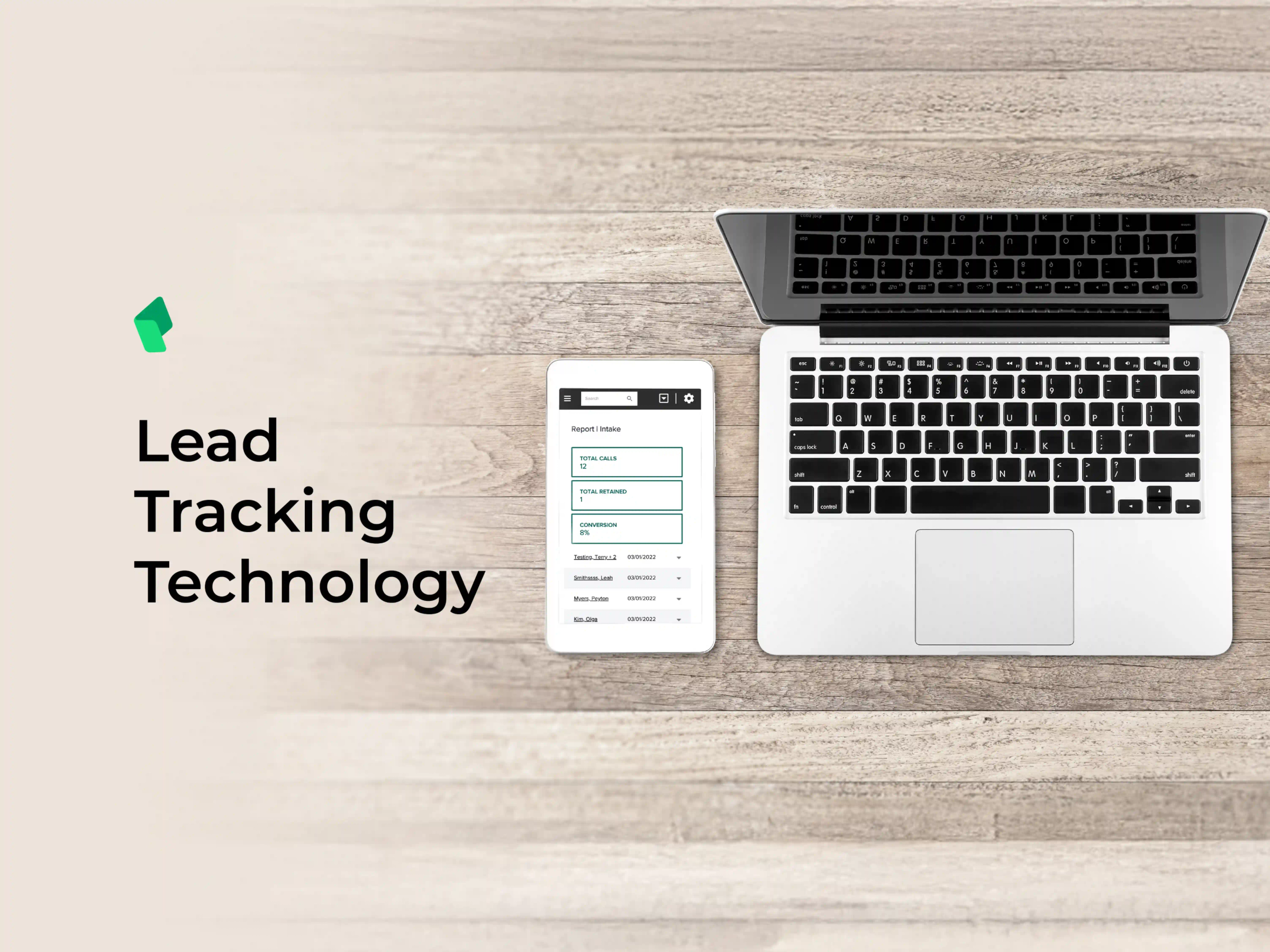Today’s legal sector is more competitive than ever, and this is especially true for personal injury law firms.
With so many legal practice management software options available for law firms, it's of utmost importance to find the right fit. A client’s first impression of your law firm occurs at the point of their initial call. How you and your team respond will set the tone for what the client can expect from future interactions.
Luckily, technology is helping small and evolving firms to manage their client intake process more effectively.
Today’s Legal Sector and Client Intake
Today’s legal sector is quite competitive. Here’s how technology helps in this extremely competitive landscape.
Competitive Landscape
Competition in the legal field is intense, especially in personal injury law. With so many choices, clients can afford to be picky. To stand out, your firm needs more than just legal smarts—you need a smooth, seamless client intake process that captures and converts the cases that you want.
The Role Of Technology
Technology is constantly improving, and its impact on law firms is undeniable. In the past, even with limited tools, law firms managed to achieve significant results. Today, however, we have tools tailored specifically for the unique needs of law firms—making them more powerful and efficient than ever before.
Technology is Necessary for Legal Client Intake
Is your law firm still relying on antiquated solutions to manage your client intake process? Whether you're using paper, Excel spreadsheets, or Google Docs, chances are you're not tracking your law firm's leads as well as you should.
Is your law firm still relying on antiquated solutions to manage your client intake process? Whether you’re using paper, Excel spreadsheets, or Google Docs, chances are you're not tracking your law firm's leads as well as you should.
These patchwork solutions may have worked up until now, but as your law firm grows, they are weaker tools for tracking follow-ups and identifying trends. Adopting a cloud-based legal case intake management software has several advantages such as improved tracking and trend identification.
Given their significant importance in modern law firms' tech stack, let’s take a deeper look at what cloud-based legal case management software can offer.
Benefits of Legal Case Intake Software for PI Lawyers
The most seamless solution would be to integrate intake management into a case management system. No repetitive work for your team, and streamlined legal services for your clients.
1. Organize Your Leads
The best client intake solutions allow you to organize and access client information all in one place. No more searching for a prospective client’s phone number. From critical case facts to statute dates, good client intake will ensure that valuable information does not slip through the cracks.
An intake management solution ensures that all your leads are accurately captured and securely stored, which optimizes your workflow and reduces the chances of errors. Modern platforms are designed for flexibility, allowing access from any location, whether you're at the office or working remotely. This accessibility promotes seamless collaboration among your team members, keeping everyone in sync no matter who first engages with the client. The shift toward mobile-friendly, unified communication helps legal teams maintain alignment throughout the client interaction process.
Later, we'll dive into how tools like CASEpeer can take these advantages even further.
2. More Accurate Data Entry
The best intake programs make it easy for your team to capture and view all the necessary information from a lead.
The best intake programs make it easy for your team to capture and view all the necessary information from a lead. In some cases, it will be a name, call back number, and how they found your law firm. For others, it will be an in-depth evaluation of the case and a checklist of injuries.
Evaluate technology not only for its ease of use but also for features that work to prevent human error. For example, some software will alert you about an incomplete telephone number or improperly formatted email address.
3. Optimize your Client Follow-Ups
Have you ever had a good prospective client sign with another attorney because your law firm failed to follow up with them? Technology designed to assist with client intake and law firm management minimizes the chances of this happening.
A logical intake workflow identifies which leads are in limbo—so you don’t miss follow-up with prospects. Certain programs even allow you to filter by intake worker, or the date a lead was last touched. Technology can help every intake team become more proactive.
4. Harness Meaningful, Actionable Data
Are you aware of where your leads are coming from? Whether it’s client referrals, organic searches, or paid ads, it’s crucial to understand which lead sources consistently bring in high-quality cases in order to inform and shape your marketing strategy.
For instance, lead source tracking allows your law firm to pinpoint which channels deliver the best return on investment. With this data, you can allocate your resources more effectively and make informed decisions about where to focus your marketing efforts.
Legal technology enables precise lead source tracking—eliminating guesswork and ensuring that every dollar spent on marketing is accounted for. By knowing exactly where your leads are coming from, you can maximize your firm's growth potential and ensure that no opportunity is overlooked.
5. Maximizing Efficiency
Efficiency is key to the success of any personal injury law firm—and optimizing your client intake software can significantly contribute to this. Advanced legal intake systems can streamline administrative tasks by automating routine processes such as document generation, appointment scheduling, and client communications. This automation frees up valuable time for your staff to focus on more complex tasks, such as case analysis and client interaction.These processes can help your firm focus more on winning cases and building strong client relationships.
Additionally, an efficient intake system can reduce the time spent on manual data entry and the likelihood of errors. This ensures that your team can handle a higher volume of cases without compromising on quality. By maximizing efficiency through technology, your firm can better allocate resources, improve client satisfaction, and ultimately increase profitability.
Essential Personal Injury Legal Intake Software Features
When choosing legal intake software for your personal injury law firm, focus on features that are easy to use and help build better efficiency. Here are the key features that top intake software should have:
Access anywhere. The best intake software should let you manage leads and client details from anywhere, whether via mobile or in the office.. This flexibility helps you stay connected and in control—no matter where you are.
Automated follow-ups. Good intake software includes law firm automation features that highlight which leads need a follow-up. This ensures no potential client is forgotten—helping your team stay on top of tasks and convert more leads into clients.
Built-in reporting. Strong reporting tools help you track important metrics, such as lead-to-client conversion rates. This information is key to improving your processes and making better business decisions.
Website integration Web integration allows you to automatically pull leads from your firm’s website into the software. This seamless connection means you won't miss any opportunities—ensuring a smooth and efficient intake process.
Key Information to Collect on Personal Injury Law Firm Intake Forms
You can have the best legal intake software, but if you don't ask the right questions and collect the best information on your intake forms, you won't be able to evaluate the viability of a potential case.
You can have the best legal intake software, but if you don’t ask the right questions and collect the best information on your intake forms, you won't be able to evaluate the viability of a potential case. Below are the key types of information that personal injury law firms should consider collecting on their intake forms:
Referral Source
How did you hear about us?
Where did you find our contact details?
Why it’s important: Understanding how clients found your firm helps assess the effectiveness of your marketing efforts and helps identify the best referral sources to focus on.
Client Expectations
What are your primary goals and expectations for this case? Are you seeking compensation, a quick resolution, or something else?
Why it’s important: Knowing what the client expects allows you to manage those expectations from the outset, tailor your legal strategy accordingly, and ensure alignment throughout the case.
Incident Details
What is the date and time of the incident?
What is the location of the incident?
Can you please describe the incident?
Were there any involved parties (including witnesses) during the incident?
Why it’s important: Capturing detailed information about the incident is critical for assessing liability and potential case value. It helps the legal team understand the context and begin building a strategy early on.
After Incident Details
Can you please describe the injuries you sustained during the incident?
Have you received medical treatment?
What is your current pain level?
Why it’s important: Collecting comprehensive information about the injuries helps evaluate the severity of the case, understand the client's current medical condition, and determine the appropriate legal strategy for compensation and care.
Insurance Information
Do you currently have insurance? If yes, please provide these details.
Do you have information on the other party’s insurance? If yes, please provide this information.
Have you been in communication with any insurance companies? If yes, please describe.
Why It’s important: Insurance details are vital for determining coverage and understanding the financial aspects of the case. This information is necessary for negotiating settlements and claims.
Legal History
Were you involved in any previous legal cases or claims?
Do you currently have legal representation?
Why it’s important: Knowing if the client has prior legal cases or ongoing legal representation can affect how your firm approaches the case. It also helps in identifying any potential conflicts of interest.
Employment and Financial Information
What is your current employment status?
What time did the incident occur?
Were there any lost wages due to the injury?
Is there any other financial impact as a result of the injury?
Why it’s important: Employment and financial details provide insight into the economic damages the client has suffered. This information is crucial for calculating lost wages and overall financial compensation.
Learn More about CASEpeer's Client Intake Management
When it comes to managing client intake and CRM software for legal firms, CASEpeer stands out as a comprehensive solution designed specifically for personal injury law practices. Many new intake management solutions are on the market, each offering various features, but few provide the depth and specialization of CASEpeer.
CASEpeer is not just a client intake software; it’s a powerful all-in-one tool that seamlessly integrates both client intake management and CRM functionalities tailored for legal firms. This dual capability allows law firms to manage the entire client lifecycle—from initial contact through case management—within a single, intuitive platform.
With CASEpeer, you get advanced intake features that streamline lead tracking, automate follow-ups, and ensure no potential client slips through the cracks. At the same time, its CRM tools help you build and maintain strong client relationships, offering personalized communication and detailed insights into client interactions.
This combination of intake and CRM software within CASEpeer allows your firm to not only capture and convert leads effectively, but also nurture those relationships throughout the legal process. The result is a more efficient, client-focused legal practice management software that can better serve your clients and grow your business. Book a demo from CASEpeer and learn why it’s the best management solution for every personal injury law firm.
To learn more about how CASEpeer can transform your law firm's client intake and CRM processes, check out this blog on converting leads through your intake strategy.
About the author

Justin Fisher Content Writer
Justin Fisher is a content writer and SEO strategist for leading legal software companies, including MyCase, Docketwise, and CASEpeer, as well as LawPay, the #1 legal payment processor. He specializes in writing about emerging legal technology, financial wellness for law firms, and more.
